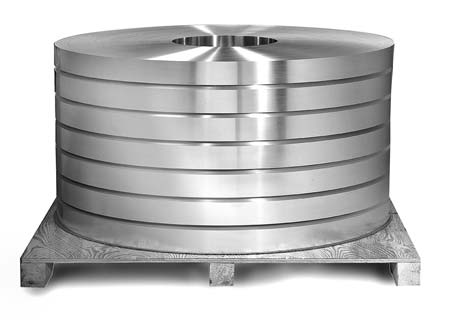In today’s environmentally conscious world, consumers and manufacturers alike are constantly seeking ways to reduce their carbon footprint. Thankfully, aluminum is “infinitely recyclable”, and therefore one of the most recyclable materials on the planet. In fact, nearly 75% of all aluminum ever produced is still in use today!1
So, what makes aluminum so special when it comes to recyclability? Unlike many other materials, it doesn’t degrade during the recycling process. It can be recycled indefinitely without compromising its quality or integrity. This is great news for manufacturers, the environment, and the economy. Especially since aluminum boasts impressive strength-to-weight ratios.
The Aluminum Recycling Process
The recycling of aluminum is a closed-loop process that consists of 4 phases as follows:
- Collection – products, ranging from beverage cans to aircraft components, are collected and transported to a recycling facility
- Sorting and Cleaning – collected aluminum is sorted based on alloy and cleaned
- Melting – cleaned aluminum is melted down using only 5% of the energy needed to produce aluminum from bauxite2
- Reforming – molten aluminum is then shaped into ingots or other forms, ready to be used in the production of new products.
Environmental & Economical Benefits
 The positive impacts of recycled aluminum on both the environment and the economy are quite impressive. Let’s consider that aluminum starts as bauxite, a sedimentary rock that contains both aluminum and gallium. Bauxite is mined, and then must go through several energy-consuming processes to become usable aluminum. Conversely, the same material made from recycled aluminum only takes about 5% of the energy of the bauxite process.3 As a result, recycling efforts in the US alone save more than 90 million barrels of oil equivalent each year. Yes. 90 million!4
The positive impacts of recycled aluminum on both the environment and the economy are quite impressive. Let’s consider that aluminum starts as bauxite, a sedimentary rock that contains both aluminum and gallium. Bauxite is mined, and then must go through several energy-consuming processes to become usable aluminum. Conversely, the same material made from recycled aluminum only takes about 5% of the energy of the bauxite process.3 As a result, recycling efforts in the US alone save more than 90 million barrels of oil equivalent each year. Yes. 90 million!4
Here’s another way to look at it: Every ton of recycled aluminum saves approximately 14,000 kWh of electricity5, significantly reducing greenhouse gas emissions. This energy conservation is equivalent to powering an average household for over a year. The International Aluminum Institute estimates that 30 million tons are recycled globally each year. This translates to a whopping 30 million households.
Benefiting the Circular Economy
Aluminum’s recyclability aligns perfectly with the principles of the circular economy. Currently, in the US, we are recycling more aluminum now than ever before. This is good news. But if we recycled all of our aluminum beverage cans, we could save over $800 million a year. By continually reusing aluminum, we reduce the demand for bauxite and minimize waste, ultimately contributing to a more sustainable future.
Choose Aluminum
By choosing aluminum over other materials, you are choosing a material that is known for strength, conductivity and versatility, while also supporting a cleaner, greener planet, and a stronger economy.
Source:1,2,3,4 The Aluminum Association, aluminum.org.

